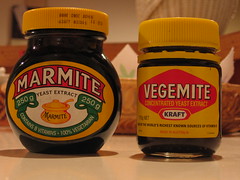 In the early days of the web, it was common to have nearly every website begin with “www.” as a way to indicate that the domain name related to a website, rather than (say) an ftp site, or a news site, or any of a dozen other common types of site on the Internet. However, as more people begin to believe that The Web == The Internet, this practice has slowly disappeared among the “cool” sites. This guide on the net even suggests that “pro” sites should avoid using “www.”
In the early days of the web, it was common to have nearly every website begin with “www.” as a way to indicate that the domain name related to a website, rather than (say) an ftp site, or a news site, or any of a dozen other common types of site on the Internet. However, as more people begin to believe that The Web == The Internet, this practice has slowly disappeared among the “cool” sites. This guide on the net even suggests that “pro” sites should avoid using “www.”
If you type “www.twitter.com” into your favourite web browser, you’ll find that you end up at “twitter.com” (minus the “www.”). Similarly for www.wordpress.com, www.go.com, www.thepiratebay.org, www.digg.com and www.stackoverflow.com – to pick a few other popular sites. While many other sites support leaving off the “www.” in the first instance (such as mine), redirecting you automatically to the site, these listed sites use the www-free name as the canonical version.
Even if this practice continues to build in popularity, in the longer term, it is going to need to change or it will cause a problem.
The trigger will be the complete opening up of the top-level of domain names so that instead of “.com” or “.au” suffixes on names, or a preset list of them, absolutely anything will be possible as a domain name suffix (also known as the top level). Things like “drink.coke” and “stop.spam” could be completely legitimate domain names. Aside from the dot (full-stop, point, period, etc.) in the name, there is nothing about it that would indicate that you should type it into your favourite web browser.
It is convenient for me to be able to click on links in emails that I receive. Another aspect of the above is that my email client (or the sender’s) won’t be able to automatically tell that some domain names should be turned into links, so I may not realise that I ought to visit them. But if I do, I’ll need to cut-n-paste the name, rather than just make an easy click.
The work-around is to put “http://” at the start of every one of these new domain names, so that it’s clear to both human and machine that something is an address on the web. Simple – just add 7 characters to the beginning.
However, this is also achieved by putting the 4 characters “www.” at the beginning, which is universally understood to refer to a website. It’s about half as long, easier to type (especially on mobile devices), and less techy.
So, let the cycle turn, and have it become more common for popular and cool – and “pro” – sites to use “www.” (again).

![Reblog this post [with Zemanta]](http://img.zemanta.com/reblog_e.png?x-id=595cd911-3820-4347-8027-4c0445f278d4)